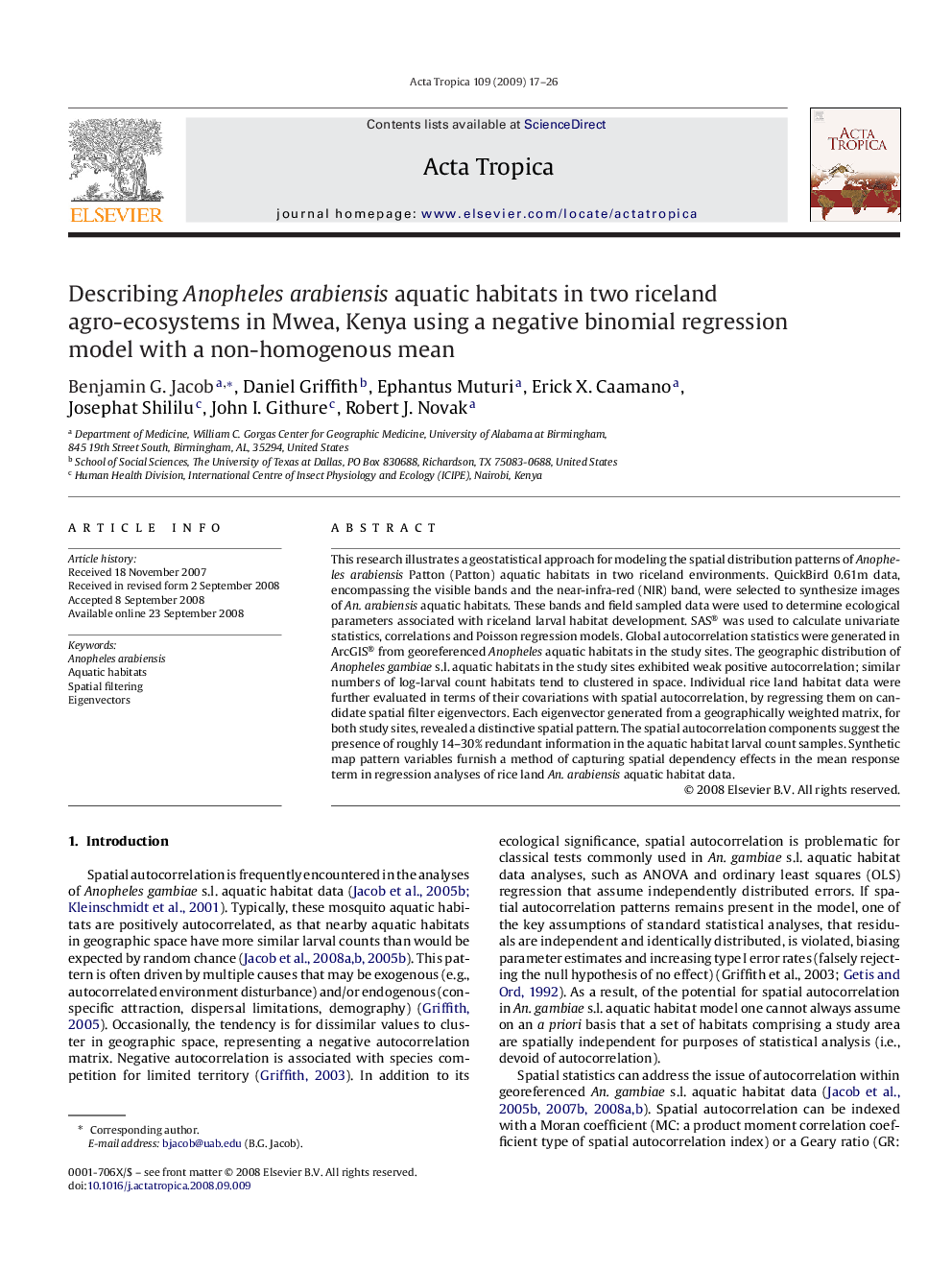| Article ID | Journal | Published Year | Pages | File Type |
|---|---|---|---|---|
| 3394343 | Acta Tropica | 2009 | 10 Pages |
This research illustrates a geostatistical approach for modeling the spatial distribution patterns of Anopheles arabiensis Patton (Patton) aquatic habitats in two riceland environments. QuickBird 0.61m data, encompassing the visible bands and the near-infra-red (NIR) band, were selected to synthesize images of An. arabiensis aquatic habitats. These bands and field sampled data were used to determine ecological parameters associated with riceland larval habitat development. SAS® was used to calculate univariate statistics, correlations and Poisson regression models. Global autocorrelation statistics were generated in ArcGIS® from georeferenced Anopheles aquatic habitats in the study sites. The geographic distribution of Anopheles gambiae s.l. aquatic habitats in the study sites exhibited weak positive autocorrelation; similar numbers of log-larval count habitats tend to clustered in space. Individual rice land habitat data were further evaluated in terms of their covariations with spatial autocorrelation, by regressing them on candidate spatial filter eigenvectors. Each eigenvector generated from a geographically weighted matrix, for both study sites, revealed a distinctive spatial pattern. The spatial autocorrelation components suggest the presence of roughly 14–30% redundant information in the aquatic habitat larval count samples. Synthetic map pattern variables furnish a method of capturing spatial dependency effects in the mean response term in regression analyses of rice land An. arabiensis aquatic habitat data.
